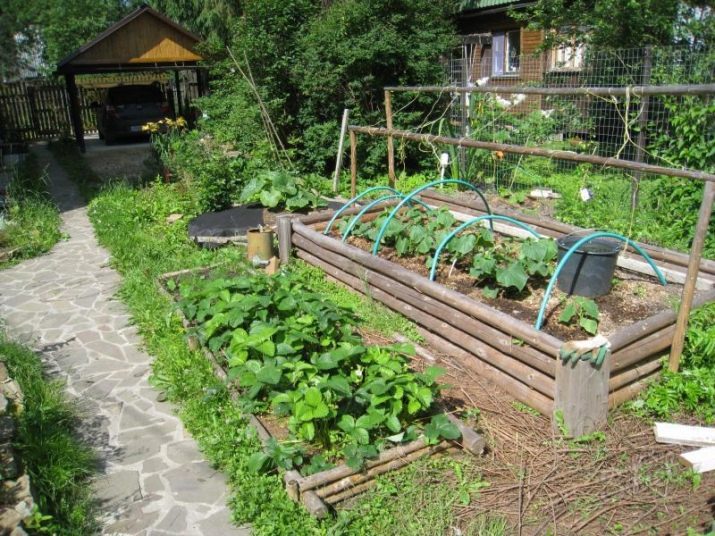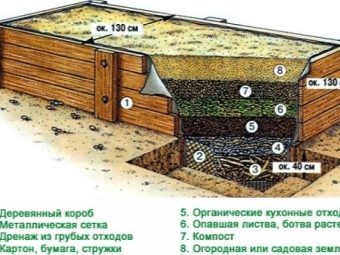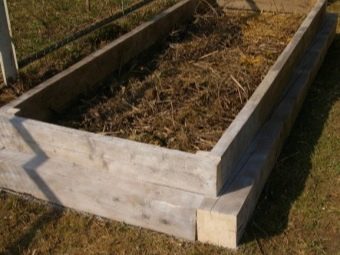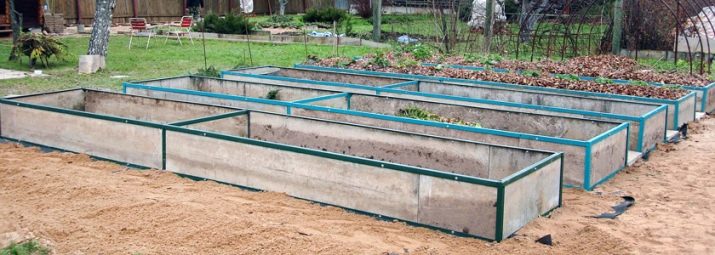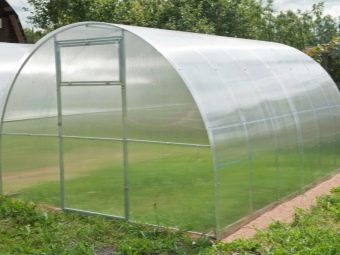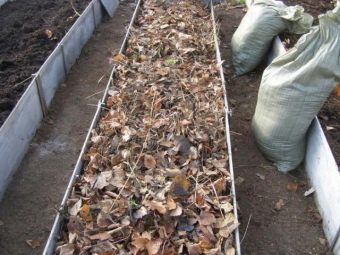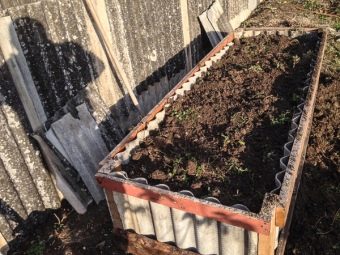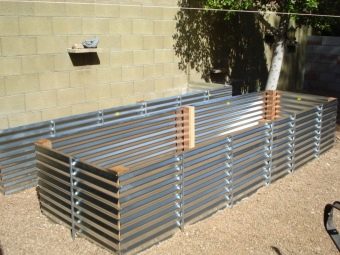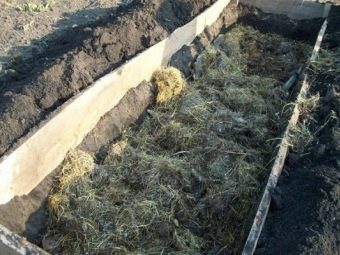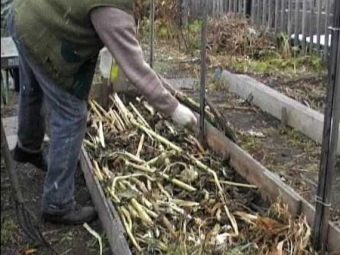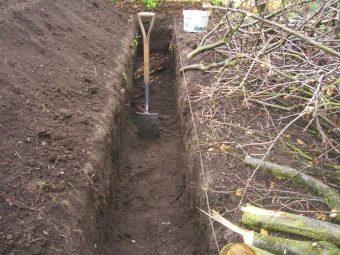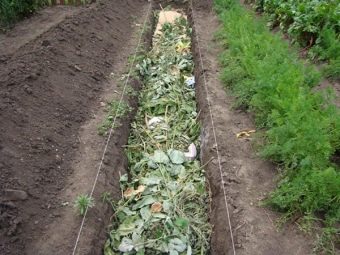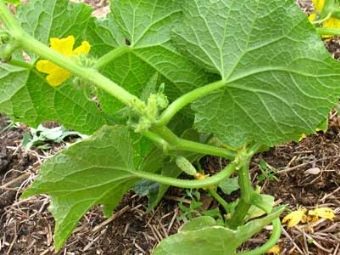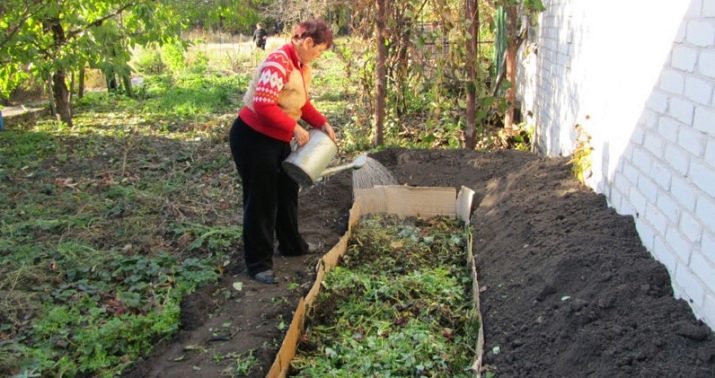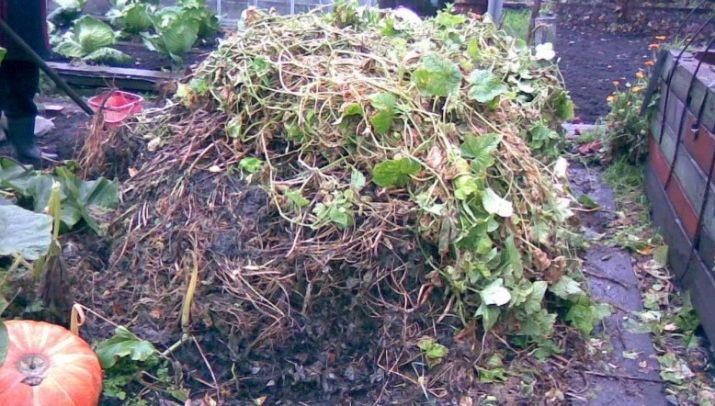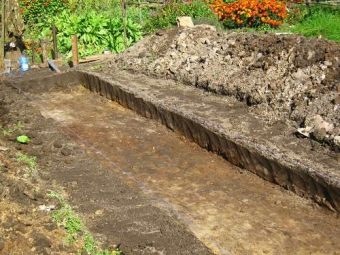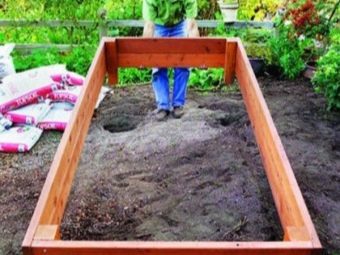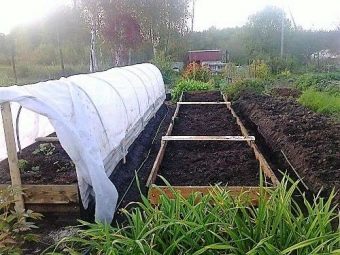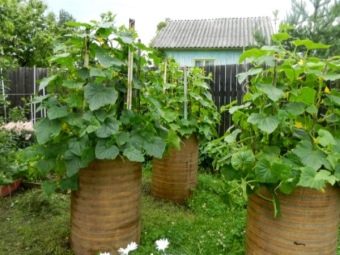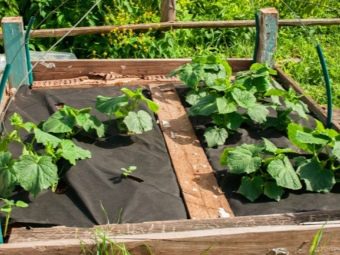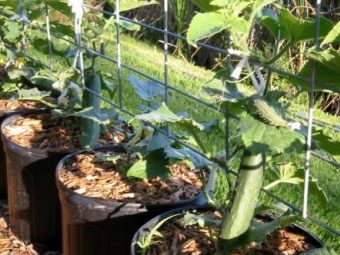How to make your own hands a warm bed for cucumbers?
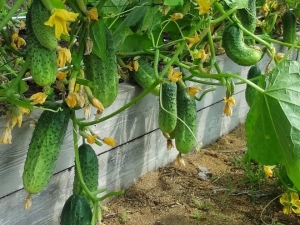
Get the maximum yield with minimum effort - the dream of every summer resident. For these purposes, come up with all the new devices and gadgets, but the techniques tested by time, do not go anywhere. Warm beds - one of the ways to provide the necessary temperature regime of such a heat-loving culture, like cucumbers. We will understand how to build them correctly and what is needed for this.
Special features
Everyone understands that a warm bed, as the name implies, should provide additional warmth. But how this happens is for many a mystery. Someone, having not fully understood the fine biochemical processes, considers its device to be a complete device at all. But it is not. The fact is that the organic matter that underlies such a design really produces heat.
Have you noticed that if you dump the leaves in a pile, then over time they will begin to rot? So this process involves millions of bacteria, due to which this process occurs. If they were not there, the leaves would simply have dried up and that's it. The process of decomposition and decay under the influence of microorganisms is accompanied by heat. This is a side reaction, but people have learned to use it for their own purposes.
A warm bed is a kind of “cake”, in which there is a brown and green layer. It is easy to guess that the first one will consist of branches, small knots and roots, the second one includes leaves, tops, stems and fruits.
This design beds are absolutely not accidental. The secret is that a wetter and softer green part releases nitrogen when rotting. This substance accelerates the whole process, and the decomposition reaction starts in the harder part of the garden, where the roots and branches are concentrated. And everything is good, but there is also its own fly in the ointment, because besides the excretion of nitrogen, a substance such as ammonia is still formed. It is he who can slow down the development of all the necessary processes for us, killing bacteria.
In the lower brown part, quite different processes take place - carbon accumulates there. And as we know from the course of school physics, when combined with hydrogen, it turns out to be nothing more than methane.
In order to ensure uniform heating and long service life, it is necessary to keep clear proportions of one and the second part. Otherwise, you either simply burn the cucumbers or, conversely, do not provide them with sufficient heat.
The service life of the beds is determined by the time over which the entire lower part of it will rot. This is not fast. Over time, you will notice that the heat becomes less. With the right balance and arrangement of the whole structure, you can not worry about your harvest for 8 years. Sometimes, of course, it happens faster.
Advantages and disadvantages
Ways to grow cucumbers quite a lot. Each of them has its advantages and disadvantages. A warm bed is the best option that will allow you to get an early harvest and save the plants from frost.
Benefits
Even if you do not know what warm beds are, it will be clear from the name that they provide heat retention even under adverse weather conditions. This is the main advantage of this design, but not the only one.
- Many will say that it is much more convenient and practical to grow cucumbers in a greenhouse. Perhaps this is so. But let's compare the cost. A good greenhouse costs a lot of money and requires care in the winter. Arrangement of a warm bed will not cost you anything.
All the material for its construction, you can stock up in the fall, when there are plenty of branches, roots and foliage.
- Another advantage is protection from weeds. Caring for cucumbers will be much easier than in the open field. After all, you do not have as often as before, weed and protect plants from pests. Boards that you build, just do not allow them to get to the garden with cucumbers.By the way, if you prefer the aboveground option, you will very soon realize how comfortable it became to care for and harvest, without bending down or crawling on your haunches on the ground.
- A warm bed is a separate ecosystem. It not only warms itself, but also removes excess moisture. The fact is that the bottom layer consists of rather large parts and provides natural drainage. The root system of cucumbers is not highly resistant to moisture, and the plant may even die if it is not provided with drainage.
- To build a greenhouse with your own hands in your own garden is not an easy task, since both materials and a special tool will be required. In the case of a warm bed, only your desire and a little effort will be a prerequisite. Regardless of which version of the beds you choose for yourself, having read the construction instructions, you can easily repeat this in your garden.
- Some gardeners are wisely suited to filling such beds, and for them there is no problem finding the right material. Weeding a kitchen garden and chopping down unnecessary bushes and trees, they do not throw them away. By the way, for some it is a real problem to find a suitable place for this. All these waste "production" go to the arrangement of warm beds. Within reasonable limits, you can add other foreign elements - old rags, paper and newspapers, which are piled up in piles in your attic.
disadvantages
Negative moments are much less, and someone in general does not consider them as such. One of the key is fragility. Sooner or later, the lower solid layer will become unusable, and will not perform its functions. In this case, you have to either start collecting it from the very beginning or just disassemble it.
The second point will be the choice of location. Do not think that the bed with cucumbers can produce the same yield, wherever it is. For example, it is necessary to take into account the region of residence, and moisture, and, of course, light. So, in Siberia it is better to equip it on the southern slope, and in the South you can place it on a flat surface.
Varieties
Despite the common name, such smart beds may differ in their design. Some settle them in a trench, while others, on the contrary, donate barrels for them or make elevations.
Trench
This technology is suitable for dry regions. Its advantage is that the layers immersed to a certain depth longer retain moisture and prevent the soil from drying out. All work can be divided into several main stages.
- We dig a trench about half a meter deep and wide. This will be enough to put all the layers. The width will allow you to easily care for plantings and harvest. The length completely depends on your capabilities and desires.
- We lay a brown layer of roots, stumps and branches. Large items will need to be cut. Although this layer will be the largest fraction, but the individual elements must fit well, so as not to form empty spaces.
- Further we fall asleep our drainage with foliage and other soft parts of plants. The ratio of the solid and green parts should be 3: 1. Accordingly, the depth of the roots and branches will be 3 times greater than the layer with leaves. A depth of 5 cm is considered sufficient. This amount is enough to warm up our bed.
- At this stage, we lay 40-50 cm of compost, manure or humus, and from above on top we lay out a small layer of ash. The latter is recommended by all gardeners as a safe and effective fertilizer containing a mass of trace elements.
- Completes our complex construction layer of fertile land. Its depth should be about 10 cm.
Frame
To build a warm bed of this type, you will have to make a lot of effort. The first is going to frame. Its height should be about 50 cm. The layers that we will lay in it are identical to those in the trench version.For reliable protection from pests and weeds, it will be necessary to lay a protective grid of the appropriate size on the bottom.
The length and width of the perimeter of the frame beds can be absolutely any. The main thing is that it is convenient for you to process it. The peculiarity of this method is that the design is well ventilated. On the one hand, this is a plus - a sufficient amount of oxygen will be supplied to the roots. On the other, a huge minus - there is a risk of rapid drying of the soil, which will lead to the need to water the garden very often.
Combined
This species is derived from the first two. For a bed in this case, not only a small trench digs, but an additional frame is being constructed. This option combines the benefits of frame and trench structures. The ground in it does not dry out so quickly, since the drainage layer will be in the ground. On the other hand, the frame will help protect the bed from shedding and facilitate weeding and watering.
Do it yourself
We have already reviewed the detailed instructions for arranging the layers using the example of a trench structure. I just want to note that some gardeners do several repetitions of layers, and the sequence looks like this: brown layer - foliage - organic matter - foliage - compost - ash - ground.
Here we want to highlight a few important points that will help you get a good harvest.
Material collection
It is best to prepare everything you need in the fall. During the winter, our material will mature, and it can be immediately laid out in the garden. If you, for any reason, failed to do this, then you can prepare everything in the spring. But not less than a month before landing. Collect leaves, stalks and other material, pour plenty of hot water over it and cover it with a dark film.
Some gardeners advise to plant cucumbers on nettles, which can also be used as a green layer.
Choice of place
In regions and places with high humidity or close to the groundwater, it is better to give preference to the frame structure, since water will accumulate in the trench.
Cucumbers love sunlight, so don’t choose shaded areas. When choosing a place, it is also worth considering that in this position the bed will be used for more than one year, so it should not interfere with future construction or other objects.
Additional greenhouse device
Our smart bed will provide heat from below, but the plant will not be protected from a sudden drop in temperature. Therefore, if you have the opportunity to build something like a greenhouse above the garden bed, then you will provide double protection for your cucumbers.
Alternatives
We have sorted out the main types and ways of arranging them ourselves, but experienced summer residents literally use every opportunity to increase the yield and use of space. So, as a frame not a board, but an ordinary barrel can be used. Even an unnecessary tire of large radius can become a real warm bed of a frame type. Such a rational approach greatly facilitates the process of creating structures.
Tips
Arrange a warm garden bed in his garden is a snap. The technology of its construction is clear and simple. But in order to improve the yield, there are a few small secrets.
- A warm bed can serve more than one year, and a variety of crops can be grown on it. It is important to consider that it is best if the predecessors of cucumbers were tomatoes or cabbage. After tomatoes or cucumbers, it is better to replace the top layer of soil.
- Under the film, cucumbers can be planted in the middle of May. In the open warm garden is better to plant the plants in late May.
- Even if you do not have the ability or desire to build a greenhouse above the garden bed, you can simply cover it with a black film with cuts. This will help maintain the desired temperature, speed up germination and minimize the number of weeds.
- Even in a warm garden bed, do not forget about additional feeding and protection from pests. The latter is easy to implement, covering the plant with ashes in the period when the second true leaf appears.
Warm beds for cucumbers will require a little time and effort during the creation phase. Subsequently, they will greatly facilitate the care of cucumbers and provide a good harvest. Cucumbers are quite a demanding culture, but it is possible to create comfortable conditions for it even in Siberia or other northern regions of our country.
The process of creating a warm bed with your own hands, see below.

